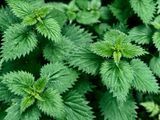What's fiber?
If there is an underestimated part of our diet, it is fiber. And the benefits of them are so many that it is really worth paying serious attention to them and trying to make them daily participants in our menu. An easy and tasty way is to try the chicory plant. But before we go to it, let's look at what fiber is.
Fibers are complex carbohydrates that are indegradable from human enzymes. There are two types of fiber - soluble and insoluble. Solubles (such as pectin) have the ability to absorb water, thus inflating and increasing the feeling of satiety and thus helping to control weight. Insolubles (such as cellulose and psyllium husk) in turn pass intact through the small intestine. Reaching the large intestine, they mechanically stimulate the mucus and the retention of water in the stool. This promotes their regular emptying, and therefore it is advisable to increase the intake of insoluble fiber in the presence of constipation.
This makes them very low-calorie food, which has different effects on the digestive system. One of these effects is associated with the favor of the intestinal microbiota. Soluble fibers, which have the property of fermenting, such as inulin, are partially broken down by bacteria in the large intestine and thus help maintain the balance between the different species, which is of paramount importance for the normal functioning of this "living organ".
What about chicory?
Cichorium intybus is a perennial plant, also known as blue bile. Just like artichokes belong to the family Asteraceae. The root is long and fleshy, and the stem is tall and erect, branched at the top. The flowers form an inflorescence basket with a characteristic light blue color. It is found in grassy areas throughout Europe.
Chicory is among the earliest cultivated plants and the first notes are from the 3th century BC. They are believed to belong to Theofras. Historically it has been used for 3 main things:
- as a vegetable
- medicinal plant
- for cosmetic purposes
Today, from a pharmacological point of view, all parts of the plant are used, but the greatest interest provokes its root, and it is the subject of this article.
Chicory root is reach in inulin
ChChicory root is among the vegetables that have the highest fiber content per unit dry weight. Inulin is especially common. It is a complex carbohydrate with a storage function in plants and, as mentioned above, is classified as soluble fiber with an important function for the well-being of our digestive system [ref. 1]. You can also find it with the name prebiotic, ie it is used as an energy source by beneficial intestinal bacteria. It can be especially useful in people who suffer from gastrointestinal disorders.
Reduces blood sugar
The root of chicory is recommended for people with diabetes or prediabetic condition. This is because it has a hypoglycemic function, which is again due to the content of prebiotics inulin [ref. 2] .
Supports peristalsis
Constipation is among the most common problems in Western society. This is due to many factors, among which are sedentary lifestyle and insufficiently diverse diet.
It is well known that increased intake of inulin promotes peristaltic movements and therefore the frequency of emptying the intestines [ref. 3] . The mechanism of action is explained by the fact that it is not digested in the upper part of the tract and reaches intact the large intestine, where it begins to ferment by intestinal bacteria. This leads to the production of short-chain fatty acids, lactate and gases. This, together with increased intestinal contents lead to stimulation of peristaltic movements and colon function.
Regulates appetite
Although inulin is prevalent, chicory roots also contain other fibers such as cellulose, hemicellulose and pectin. In total, about 20% of the dry mass of the root is composed of dietary fiber, so it is considered one of the vegetables the richest source of this much-needed part of each person's diet. In addition to the proven health benefits, fiber reduces the feeling of hunger and leads to faster nutrition. So by adding them to your menu, we work for a better figure.
Chicory coffee
Chicory coffee does not have a very clear history, but it is believed to have originated since the 19th century in France. While it sounds like an exotic drink, it has actually been gaining great popularity lately. To make it, it is necessary to dry and bake the root. The taste resembles that of coffee, often described as earthy or nut, but interestingly, it does not contain caffeine. Because of these qualities, chicory is used by people who want to reduce caffeine intake.
In addition, this drink also contains some minerals and vitamins to its consumers, such as vitamin B6 and manganese, therefore it is believed to have a beneficial effect on the functioning of the nervous system.
Anticancer effect of chicory extract
Phytometabolites found in chicory extract have shown antitumor activity in vitro, in vivo and even in some clinical trials. For example, research on various types of cancer cells, including breast cancer, leukemia and prostate cancer, investigates and shows a strong cytotoxic effect of the extract on these cells [ref. 4].
Contraindications
Chicory is considered safe, but it is nevertheless possible to cause an allergic reaction in some people.
There are not yet enough studies to show what the effects are in pregnant and lactating women. It is desirable that they consult their attending physician before using the plant, especially when it comes to healing or regular consumption of chicory coffee. As part of the varied and healthy menu in moderation, there are no open contraindications.








